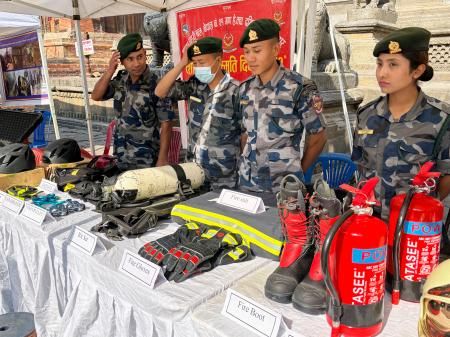Reflecting on Nepal's Earthquake Decade: Resilience, Recovery, and the Road Ahead
Ten years after the devastating 2015 Nepal earthquake, the nation continues its journey of recovery and rebuilding. This anniversary serves as a poignant reminder of the immense loss and the remarkable resilience shown by the Nepali people. This article reflects on the past decade, highlighting the progress made, the challenges that remain, and the crucial lessons learned for future disaster preparedness.
The Scars Remain: Remembering the 2015 Earthquake
The 7.8 magnitude earthquake that struck Nepal on April 25, 2015, and its subsequent aftershocks, left an indelible mark on the nation. The immediate aftermath was catastrophic:
- Massive loss of life: Thousands perished, and countless more were injured.
- Widespread destruction: Homes, schools, hospitals, and cultural heritage sites were reduced to rubble, particularly in Kathmandu and surrounding areas.
- Infrastructure collapse: Roads, bridges, and communication networks were severely damaged, hindering rescue and relief efforts.
The earthquake exposed vulnerabilities in Nepal's infrastructure and disaster preparedness systems, highlighting the urgent need for significant improvements. Images of collapsed buildings and desperate survivors remain etched in the global consciousness, a stark reminder of the earthquake's devastating impact.
A Decade of Rebuilding: Progress and Persistent Challenges
The past ten years have witnessed a concerted effort towards rebuilding Nepal. Significant progress has been made in several areas:
- Housing Reconstruction: While challenges persist, particularly in accessing funds and navigating bureaucratic processes, a large number of homes have been rebuilt, often with improved earthquake-resistant designs. The National Reconstruction Authority played a key role in this effort.
- Infrastructure Development: Investment in roads, bridges, and other infrastructure has improved connectivity, although many remote areas still lack adequate access.
- Disaster Risk Reduction: Increased awareness and implementation of disaster preparedness measures have been observed, including improved building codes and community-based disaster response initiatives.
However, significant challenges remain:
- Funding Gaps: Securing and effectively utilizing the necessary funding for reconstruction remains a critical hurdle.
- Slow Progress: The pace of reconstruction, especially in rural areas, has been slow, leaving many vulnerable communities still living in precarious conditions.
- Corruption Concerns: Transparency and accountability issues have hampered the effectiveness of aid distribution and reconstruction efforts.
- Mental Health Impacts: The long-term psychological impact of the earthquake on survivors continues to be a significant concern, requiring sustained mental health support.
Lessons Learned and the Path Forward
The 2015 Nepal earthquake serves as a powerful case study in disaster response and recovery. Key lessons learned include:
- The importance of robust building codes and enforcement: Implementing and rigorously enforcing stricter building codes is paramount for future earthquake resilience.
- Community engagement in disaster preparedness: Empowering local communities to participate actively in preparedness and recovery is crucial.
- Effective coordination and collaboration: Efficient coordination among government agencies, NGOs, and international partners is essential for successful disaster response.
- Addressing systemic vulnerabilities: Tackling issues such as poverty, inequality, and inadequate infrastructure reduces the overall vulnerability to disasters.
Looking Ahead: Ensuring a Resilient Future for Nepal
Nepal's journey of recovery from the 2015 earthquake is far from over. Continued investment in disaster preparedness, resilient infrastructure, and community empowerment is crucial to building a more resilient future. International cooperation, coupled with transparent governance and strong community participation, will be essential in navigating the challenges that lie ahead. The lessons learned from this decade of rebuilding must inform future strategies to mitigate the risks of future disasters. Remembering the past is crucial for building a safer and more prosperous future for Nepal.
Keywords: Nepal earthquake, 2015 Nepal earthquake, Nepal earthquake recovery, Nepal earthquake reconstruction, disaster resilience, disaster preparedness, Nepal rebuilding, earthquake-resistant construction, National Reconstruction Authority, post-disaster recovery.
